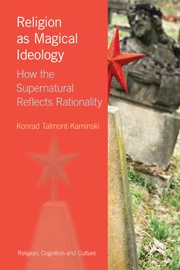2 - Superstitious reeds
Summary
Why do people find supernatural beliefs and practices attractive? Why are religions present in all human societies? Why is it that common superstitions remain common? A good answer to these questions will involve an explanation of how it is that human cognitive mechanisms are shaped in such a way that supernatural beliefs come readily to mind, seem to be confirmed by common experiences and are passed on to others in ways that ensure these beliefs remain stable in a culture. This kind of approach has been pursued by a number of thinkers and will be part of the view developed in this book. In this chapter, however, an attempt will be made to push the question one step further back. Why is it, after all, that human cognitive mechanisms are shaped in the particular fashion that makes supernatural beliefs “natural”? Why, in particular, are not humans more like the ideal reasoners of the Enlightenment philosophes and modern rational choice theorists?
One traditional answer that serves to demonstrate the problems with responses to the question of why people are superstitious falls back upon the reason/emotions dichotomy, and claims that superstitions and supernatural beliefs in general are the product of the emotions, so that a purely rational being would not be burdened by them. This is a fundamentally unsatisfactory response, however. After all, if emotions are merely a burden, why do people have them?
- Type
- Chapter
- Information
- Religion as Magical IdeologyHow the Supernatural Reflects Rationality, pp. 13 - 42Publisher: Acumen PublishingPrint publication year: 2013



